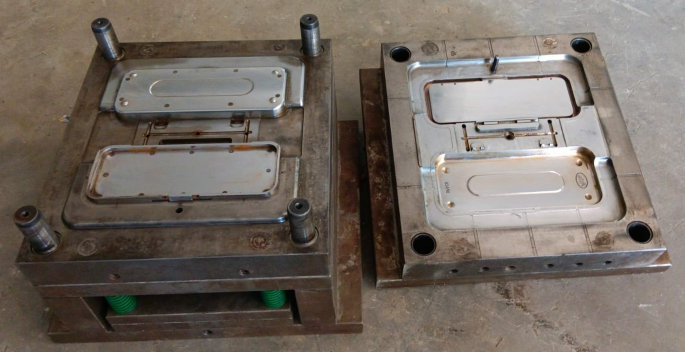Designing an Efficient Round Plastic Pail Mould: A Comprehensive Guide
Plastic pails have become an essential component in various industries, including food processing, chemical manufacturing, and agriculture. The design of an efficient round plastic pail mould plays a crucial role in ensuring the quality and productivity of the manufacturing process. This comprehensive guide aims to provide valuable insights into the key considerations and steps involved in designing an efficient round plastic pail mould.
Understanding the Requirements
The first step in designing an efficient round plastic pail mould is to thoroughly understand the requirements of the intended application. Consider the size, shape, and capacity of the plastic pail, as well as any specific features or functionalities required. Analyze the expected production volume and cycle time to determine the appropriate design parameters.
Material Selection
Choosing the right plastic material is crucial for the performance and durability of the plastic pail mould. Factors such as chemical resistance, impact strength, and temperature stability should be considered. Common plastic materials used for round plastic pails include high-density polyethylene (HDPE), polypropylene (PP), and polyethylene terephthalate (PET). Consult with material suppliers or conduct material testing to ensure compatibility with the intended application.
Design Considerations
When designing a round plastic pail mould, several key considerations should be taken into account:
a. Wall Thickness: Optimize the wall thickness of the plastic pail to ensure structural integrity while minimizing material usage. Thicker walls enhance strength, but excessive thickness can lead to longer cooling times and increased production costs.
b. Draft Angle: Incorporate an appropriate draft angle into the mould design to facilitate the ejection of the plastic pail. A draft angle of 1-3 degrees is typically recommended to prevent sticking and facilitate efficient demoulding.
c. Ribs and Reinforcements: Integrate ribs and reinforcements into the mould design to improve the strength and rigidity of the plastic pail. Strategic placement of ribs can minimize material usage while enhancing structural integrity.
d. Parting Line: Determine the parting line of the mould carefully to ensure smooth demoulding and minimal flash formation. Proper alignment of the parting line is crucial for achieving consistent wall thickness and preventing parting line defects.
Mould Design
The mould design plays a vital role in ensuring the efficiency and accuracy of the plastic pail manufacturing process. Consider the following aspects during the mould design phase:
a. Cavity and Core Design: Develop an efficient cavity and core design to accurately replicate the desired shape and size of the plastic pail. Utilize advanced CAD/CAM software to create precise and complex geometries.
b. Cooling System: Incorporate an effective cooling system into the mould design to ensure uniform cooling and reduce cycle time. Optimal cooling channels can significantly enhance productivity and reduce production costs.
c. Ejection System: Design a reliable ejection system to facilitate the removal of the plastic pail from the mould. Utilize ejector pins, sleeves, or air ejection systems based on the specific requirements of the design.
d. Venting System: Ensure proper venting within the mould to allow for the escape of air and gases during the injection molding process. Insufficient venting can result in defects, such as air traps and burn marks, compromising the quality of the plastic pail.
Prototyping and Testing
Before commencing full-scale production, it is essential to prototype the mould design and conduct thorough testing. Prototyping helps identify any design flaws or performance issues, enabling necessary modifications. Testing should include evaluating the functionality, dimensional accuracy, and structural integrity of the plastic pail.
Manufacturing and Quality Control
Once the mould design has been validated, the manufacturing process can begin. Collaborate with experienced and reputable mould manufacturers to ensure the production of high-quality moulds. Implement stringent quality control measures to inspect the finished moulds for any defects or deviations from the design specifications.
Заключэнне
Designing an efficient round plastic pail mould requires careful consideration of various factors, including material selection, design considerations, mould design, and manufacturing processes. By following this comprehensive guide, manufacturers can optimize productivity, improve product quality, and enhance the overall efficiency of the plastic pail manufacturing process.
Папярэдняя:Creating a Mold for Plastic Vegetable Crates: A Guide to Manufacturing
далей: Manufacturing a High-Quality Plastic Middle Chair Mould
-
Molding Perfection: Crafting the Ideal Plastic Garbage Bin Mold
2023-12-8
In the world of waste management, the unsung hero is often the plastic garbage bin—a staple in households, offices, and ...
Паглядзець дэталі -
Injection Mold: Streamlining the Manufacturing Process
2023-4-15
Injection molding is a manufacturing process that has revolutionized the way companies produce plastic products. It invo...
Паглядзець дэталі -
Plastic box mold injection molding, excellent quality creates the future
2024-4-19
In today's wave of industrial production, plastic box mold injection molding, with its excellent quality and innovative ...
Паглядзець дэталі -
Designing a High-Quality Plastic Beer Crate Mold
2023-6-18
The beer industry is one that is continuously growing and evolving with the demands of consumers. With this growth comes...
Паглядзець дэталі -
Важнасць апрацоўкі з ЧПУ для вытворчасці пластыкавых формаў пад ціскам
2021-7-28
Важнасць апрацоўкі з ЧПУ для вытворчасці пластыкавых формаў для ліцця пад ціскам, добрая форма для ліцця пластыка з дакладнымі памерамі...
Паглядзець дэталі -
Unveiling the Secrets of Automotive Mould: An In-Depth Exploration
2023-12-26
Automotive moulds play a crucial role in the manufacturing process of automobiles. Without them, the sleek and stylish d...
Паглядзець дэталі








